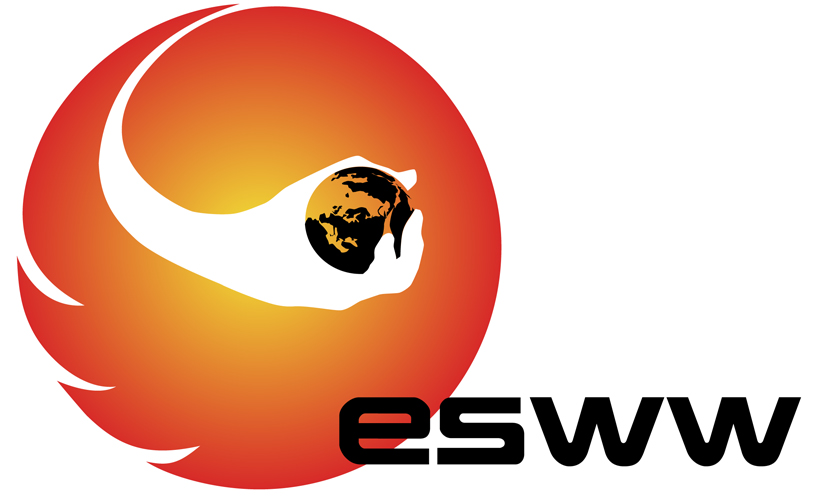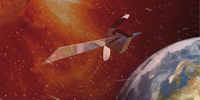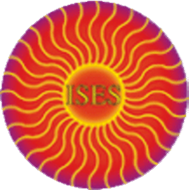
15-19 November, 2010 - Brugge, Belgium
Space Weather Products and Services
| Session: | Session 4 Space Weather Products and Services (04) |
| Type: | Oral presentation |
| Date: | Thursday, November 18, 2010 |
| Time: | 09:00 - 12:30 |
| Chair: | Christian Jacquey & Larisa Trichtchenko |
| Co-chair: | |
| Remarks: | Coffee break: 10:30 - 11:00hrs |
| Seq | Time | Title | Abs No | ||||
| 1 | 09:00 |
Monitoring of Auroral Oval Location and Geomagnetic Activity based on Magnetic Data from LEO Satellites.
Vennerstrom, Susanne Technical University of Denmark, DENMARK Real-time monitoring of geomagnetic activity is often complicated by the fact that global coverage and measurements from many stations are required. In consequence local magnetic observations from a single station are often used as a substitute. Magnetic observations from polar orbiting LEO satellites are, however, more global in nature and could be used as a useful alternative for space weather applications. Such data could also be used to monitor the location of the auroral region, by monitoring the position of the auroral electrojets. Such a monitoring would be complimentary to the JHU/APL monitoring of the auroral oval position based on DMSP particle precipitation data. In this study observations of magnetic field intensity from the Orsted and CHAMP satellite magnetometers are used to infer the position of the auroral electrojet and to estimate global geomagnetic activity. This is, on event-basis, compared to the automated auroral boundaries derived from DMSP, and a close correspondence is found between electrojet position and the position of the maximum in the average energy of the precipitating electrons (boundary b2e). In addition measures of the auroral electrojet intensity are derived, that for the northern hemisphere is highly correlated with the AU and AL groundbased magnetic electrojet indices. Finally encouraging results concerning the derivation of a satellite based "Dst" index is shown. Only variations in total field intensity are used in the derivation of all these space weather parameters, i.e. vector magnetic field data is not required. The study is part of the Solar-Terrestrial Investigations and Archives (SOTERIA) collaboration. |
|||||
| 2 | 09:15 |
SWAP and LYRA Onboard PROBA2, new EUV Instruments for Space Weather monitoring
De Groof, Anik1; Berghmans, David2; Dominique, Marie2 1ESA c/o Royal Observatory of Belgium, BELGIUM; 2Royal Observatory of Belgium, BELGIUM PROBA2 is an ESA micro-satellite, launched on November 2, 2009 from Russia. PROBA2 carries two solar monitoring instruments, the LYRA UV radiometer and the SWAP telescope (Sun Watcher using Active Pixel System detector and Image Processing) for coronal imaging and space weather monitoring. We will overview the technical characteristics, the performance of SWAP and LYRA and the opportunities brought by the PROBA2 platform. The available PROBA2 data products and services will be presented, giving special attention to the unique complementarity of the SWAP images as compared to SOHO/EIT, STEREO/SECCHI, and SDO/AIA. Similarly, the complementarity of LYRA data as compared to other radiometers as GOES, TIMED-SEE, SORCE will be discussed. SWAP and LYRA have an open data policy and data products are available in near-real time, up to one hour after the facts. |
|||||
| 3 | 09:30 |
Creating an SEP Flux Database from ESA/SREM Measurements
Sandberg, Ingmar1; Daglis, Ioannis2; Anastasiadis, Anastasios2; Petteri, Nieminen3; Daly, Eamonn3 1National Observatory of Athens, GREECE; 2Institute for Space Applications and Remote Sensing, National Observatory of Athens, GREECE; 3European Space Agency, ESTEC, NETHERLANDS
SREM, the ESA Standard Radiation Environment Monitor detects high-energy electrons and protons and bins the measurements in broad and overlapping energy bands. The production of Solar Energetic Particles (SEP) fluxes from measurements of the SREM units on-board several spacecraft with different orbits (LEO, MEO, IP and L2 point), will provide novel, powerful data sets to the space weather community. This paper presents extensive comparisons of flux datasets calculated by different conversion methods. It further discusses various intra-calibration and inter-calibration schemes, employed to optimize SREM counts-to-flux conversion methods towards the creation of an SEP flux database. |
|||||
| 4 | 09:45 |
Potential Use of NMDB for the real-time Observation and Specification of the near-Earth Radiation Environment
Steigies, Christian Christian-Albrechts-Universitšt zu Kiel, GERMANY The real-time database for high resolution neutron monitor measurements (www.nmdb.eu) is a scientific data repository which has been funded by the European Commission during 2008 and 2009. Currently NMDB is receiving data from 27 ground based cosmic ray stations, most of which are operated by European institutions. For global coverage, inclusion of neutron monitor data from US, Mexican, and South African stations is anticipated. Primary applications of the database include the daily determination of the galactic cosmic ray spectrum near Earth, and the evaluation of the time dependent near-Earth spectrum of the solar cosmic rays during Ground Level Enhancements (GLEs). Further applications based on the cosmic ray spectral data near Earth are e.g. the calculation of the ionization rates and of the radiation dose rates as a function of time on a global scale throughout the Earth's atmosphere. The paper gives an overview of the database and illustrates the power of its applications in view of the real-time observation and specification of the near-Earth Radiation Environment. |
|||||
| 5 | 10:00 |
CMA Activities in Space Weather Observation
Zhang, Xiaoxin National Center for Space Weather, CHINA This talk introduces the activities of CMA in association with the space weather observation. The activity of space weather is conducted by the National Center for Space Weather(NCSW) which is another role of the National Satellite Meteorological Center of CMA. The paper first introduces the work of Inter-Programme Coordination Team for Space Weather (ICTSW) in defining the basic parameters and core observing requirements for space weather with the goal of integrating the space weather observation into the WMO Information System. Then the paper lists the CMA?s work at present that focuses on establishing the ability in space weather observation, including the spaced-based instruments onboard FY-3 and future FY-4 spacecrafts; the ground facilities for monitoring the solar events, the middle and upper Atmosphere and Ionosphere, the GPS network, and the Meridian Space Weather Monitoring Project that shall build a chain of stations along the 120E longitude and the 30N latitude for solar observation. |
|||||
| 6 | 10:15 |
Operational Products of the Space Weather Application Center Ionosphere (SWACI) and Capabilities of their Use
Jakowski, Norbert; Borries, Claudia; Wilken, Volker; Missling, Klaus-Dieter; Barkmann, Henrike; Hoque, Mohammed Mainul; Koch, Christian; Danielides, Michael German Aerospace Center, GERMANY
The Space Weather Application Center Ionosphere (SWACI) established at DLR Neustrelitz |
|||||
| 7 | 11:00 |
NOAA?s Space Weather Services: Research Needs, Opportunities, and Challenges
Bogdan, T.J.; Onsager, T.G. NOAA-SWPC, UNITED STATES The global demand for space weather information has been increasing dramatically, even as space weather disturbances have been relatively minor throughout the recent minimum of the solar cycle. This increase in demand has occurred among the commercial and government sectors within the U.S. and in an expanding number of countries around the world. Space weather is undergoing an important transformation, as the demand for decision-capable information is beginning to exceed our ability to produce the needed information. The limitations in our space weather capabilities are due to a number of factors, including a sparsity of data, limitations in our ability to assimilate data into our models, and the difficulties in modeling the diversity of scales and processes that control the solar-terrestrial environment. This presentation will summarize the U.S. National Oceanic and Atmospheric Administration (NOAA) Space Weather Prediction Center?s perspective on space weather services. We will summarize the products and services currently available and our future plans, including new service needs, opportunities for partnerships, and obstacles that must be overcome. |
|||||
| 8 | 11:30 |
The Soteria Virtual Observatory : Offering Users Easier Way to discover Data
Callebaut, Benoit1; Berghmans, David2 1Royal Observatory of Belgium, BELGIUM; 2Roal Observatory of Brussel, BELGIUM The production of scientific results is the driving force behind all the Space Weather products and services. But that driving force doesn?t fulfil all its possibilities dedicated tools do not support it. Those tools are not only made of algorithms but also of tools that make the classification, access and annotation of datasets painless. Virtual Observatories are such new kind of supporting tools that transformed the task of locating, finding the interesting data as easy as using a website. The Soteria Virtual Observatory is a next generation tool still in development that goes one step further. Based on modern and standard technologies, it brings the capabilities of search engines like Google® to solar physics world. Based on existing projects like VSO and EGSO, it capitalize on their success and provide from its inception a wide range of interfaces for the end user and for other added value projects like HELIO. We will make a presentation of the capabilities of the Soteria Virtual Observatory and illustrate the use of the available user tools. We will show how to: We will finish the presentation by presenting an overview of the Soteria Virtual Observatory in the framework of the Soteria project, how it can be used with other tools and what can be the future of it. |
|||||
| 9 | 11:45 |
The HELIO/HEC TSRS Catalogue of dm Solar Radio Events
Messerotti, Mauro; Alberti, Valentina; Santin, Andrej; Marassi, Alessandro INAF-Astronomical Observatory of Trieste, ITALY We describe the catalogue of solar radio events recorded at 1420 and 2695 MHz by the Trieste Solar Radio System, that has been structured and compiled to facilitate cross-searches of events in solar and heliospheric investigations as well as in space weather post-event analyses. In fact, solar radio bursts observed at such frequencies are typically associated with solar flares and the most intense ones can interfere GPS-based operations and wireless communications. A comprehensive analysis of the phenomenology for physical modelling and for the estimation of the potential impacts on radio communication systems require extensive cross-searches through multiple data sets relevant to the involved solar and solar-terrestrial events. In this light, the TSRS catalogue has been tailored and ingested into the Heliophysics Event Catalogue (HEC), a special service of the Heliophysics Integrated Observatory (HELIO), which provides the user with advanced capabilities of searching catalogues of solar and heliospheric events via an interactive web interface. Some use cases involving the TSRS catalogue data to emphasise its use in integrated event searches via HELIO/HEC. In its final version the TSRS catalogue will cover the period 2000-2009. |
|||||
| 10 | 12:00 |
CASSIS - Moving forwards on Standards and Interoperability
Bentley, Robert1; Lapenta, Giovanni2; Blanc, Michel3; Csillaghy, Andre4; Berghmans, David5; Capria, Maria Teresa6; Jacquey, Christian7; Fouchet, Thierry8 1University College London, UNITED KINGDOM; 2Katholieke Universiteit Leuven, BELGIUM; 3National Centre for Scientific Research, FRANCE; 4Fachhochschule Nordwestschweiz, SWITZERLAND; 5Royal Observatory of Belgium, BELGIUM; 6Istituto Nazionale di Astrophisica, ITALY; 7Universite Paul Sabatier Toulouse III, FRANCE; 8Observatoire de Paris, FRANCE The research community is creating an increasingly rich and diverse set of tools that can be used to support different types of science including Space Weather, heliophysics, etc. Many of these are of use to virtual observatories and other projects in a away that goes far beyond what the originators envisaged. The Coordination Action for the integration of Solar System Infrastructure and Science, CASSIS, is intended to stimulate the development of standards and techniques that will improve the interoperability of data and services used in Solar System science. Through these activities we hope to improve the quality and usefulness of products and facilitate science that had not been possible before. CASSIS is a new project funded under FP7 that started in June 2010. It includes partners from the HELIO, SOTERIA and Europlanet RI projects as well as involving groups like ESA, NASA, NOAA and UCLA. We welcome the participation of all interested parties in the discussion and hope that this will lead to significant advances in this important area. More information about the project can be found on http:www.cassis-vo.eu |
|||||
| 11 | 12:15 |
The Virtual Space weather Applications Network of Tools (ViSpaNeT) - A Virtual Observatory for Data and Modelling Assets
Beltrami Karlezi, Pablo1; Hake, Philipp1; Gangloff, Michel2; Lazaro, Didier3; Heynderickx, Daniel4; Wintoft, Peter5; Hilgers, Alain6; Bourdarie, Sebastian3 1etamax space, GERMANY; 2Universitť Paul Sabatier Toulouse, FRANCE; 3ONERA, FRANCE; 4DH Consultancy, BELGIUM; 5IRF, SWEDEN; 6ESA/ESTEC, NETHERLANDS The Virtual Space weather Applications Network of Tools ViSpaNeT, currently being developed in the frame of an ESA R&D study, will be designed to allow the coupling of existing data & models from different sources in order to provide warnings of space weather hazards for space systems. The system will use the approach followed by Virtual Observatories (VO), which has proven successful in providing networked access to data resources in a number of other areas such as Astrophysics. The VO aims to provide a framework for access to distributed data archives and models by facilitating the standardisation of archiving and data-mining protocols and by providing standardised format for model interfaces. In a virtual Observatory, each data source is treated as an instrument, allowing the user to search for the data most appropriate to his needs. Users like S/C designers or operators should be able to access the Vispanet central node (a web portal), which in turn uses a common interface to call upon more specialised nodes such as ODI, SWENET, SAAPS, IPSAT or others. The central node will for example allow the user to use the data from one node as input for a second node and to set automated runs and alerts based on specific threadholds. The targeted users of the tool are: ViSpaNeT will foster this collaborate with entities from these three user groupsi by providing the means for data access and exchange among the stakeholders, considering the three parties during the requirements definition and subsequently in the system design. This presentation will look into current objectives of the ViSpaNeT system, detailing its requirements and use cases and providing an outlook into the functions and capabilities of the tool. The Vispanet project is funded under ESA contract number: 22539/09/NL/AT |
|||||







